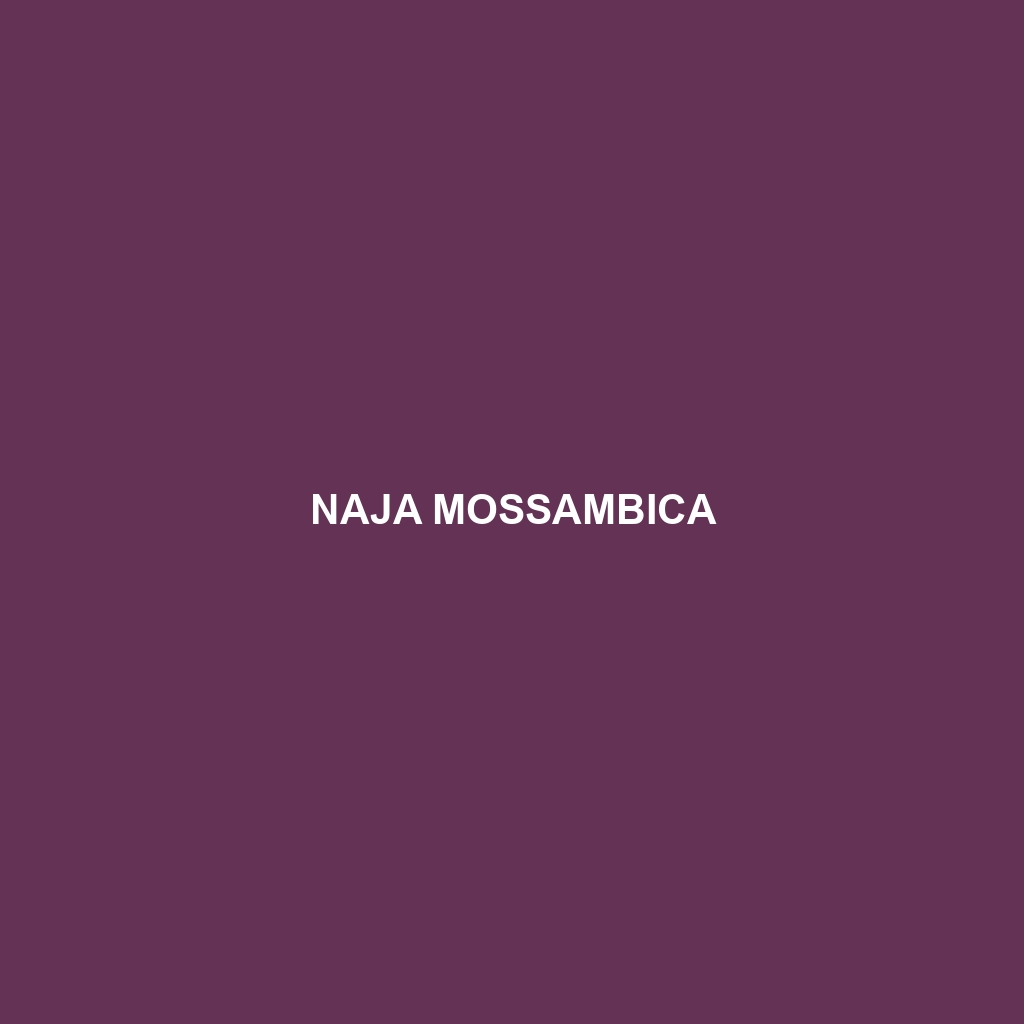Common Name
Naja mossambica
Scientific Name
Naja mossambica
Habitat
Naja mossambica, commonly known as the Mozambique spitting cobra, is predominantly found in the southeastern regions of Africa. This species thrives in varied habitats, including humid rainforests, dry savannas, and temperate forests. Notably, it is often associated with areas near water sources such as rivers, lakes, and marshlands. The Mozambique spitting cobra prefers warm climates, making its home in regions with average temperatures ranging between 24-30°C (75-86°F). African grasslands and scrublands also provide a suitable environment for this adaptable snake, showcasing its versatility to survive in different ecological niches. Its distribution extends from southern Tanzania to the eastern parts of South Africa, making it a common inhabitant of these diverse ecosystems.
Physical Characteristics
Naja mossambica exhibits distinct physical traits that contribute to its identification and allure. Adult spitting cobras typically measure between 1.0 to 1.5 meters (3.3 to 5 feet) in length, although some individuals can grow larger. The coloration varies widely, encompassing hues from olive green to brown and even a striking black. Their skin is adorned with lighter bands or spots, which can provide camouflage in their natural habitat. One of the most remarkable features of Naja mossambica is its hood, which can be expanded when threatened, displaying a distinctive pattern and size, helping to intimidate potential predators. Their eyes are prominent and protected with a specialized membrane, aiding in their acute vision, particularly in low-light conditions.
Behavior
Naja mossambica displays a fascinating array of behaviors, particularly its notorious spitting ability, which serves as a defensive mechanism against threats. This species is primarily diurnal, being most active during the day, yet it can exhibit nocturnal behavior during extremely hot weather. During the mating season, which generally occurs in the warmer months, males often engage in elaborate courtship displays. These rituals include swaying and raising of the body to attract females, showcasing not only strength but also vitality. Additionally, Naja mossambica is known for its solitary nature, rarely seen in groups outside the breeding season, which further emphasizes its territorial behavior.
Diet
As a carnivore, Naja mossambica‘s diet primarily consists of small mammals, birds, and amphibians. This species employs a unique hunting technique, often lying in wait for prey before striking swiftly. Its venomous bite immobilizes prey, allowing for easier consumption. The Mozambique spitting cobra is also known to consume rodents, which constitute a significant part of its diet due to their abundance in the wild. Additionally, variations in feeding patterns can occur with the availability of specific food sources, showcasing the snake’s adaptability. Although it primarily preys on other animals, juvenile spitting cobras may also feed on insects, which labels them as insectivores during their early life stages.
Reproduction
The reproductive cycle of Naja mossambica is intriguing and produces fascinating offspring. Mating season typically occurs in spring, and female spitting cobras can lay between 10 to 30 eggs per clutch. The incubation period lasts approximately 60 to 80 days, depending on environmental conditions and temperature. Upon hatching, the young are about 30 to 40 cm (1 to 1.3 ft) in length and are fully independent from birth. The hatchlings are immediately capable of fending for themselves, showcasing a level of development that enhances their survival chances. Parental care is absent in this species, as the female departs after laying eggs.
Conservation Status
According to the International Union for Conservation of Nature (IUCN), Naja mossambica is currently categorized as “Least Concern,” although it faces threats from habitat destruction and climate change. The utilization of agricultural practices often leads to habitat loss and fragmentation, affecting the population stability of this species. Furthermore, its perceived danger to humans has led to instances of persecution, where local inhabitants may kill these snakes due to fear. Conservation efforts are crucial to maintaining a balanced ecosystem, highlighting the importance of educating communities about the ecological role of the Mozambique spitting cobra.
Interesting Facts
Among its intriguing traits, the Mozambique spitting cobra is renowned for its ability to accurately spit venom at a distance of up to 3 meters (10 feet), targeting the eyes of its adversaries. This remarkable form of defense allows it to deter threats without necessitating a physical confrontation. The venom contains neurotoxins and cytotoxins, which can cause severe pain and potential blindness if it comes into contact with the eyes. Additionally, Naja mossambica is often appreciated for its striking appearance and is a subject of fascination for wildlife enthusiasts and snake lovers alike.
Role in Ecosystem
Naja mossambica plays a pivotal role in its ecosystem, acting as both predator and prey. As a predator, it helps regulate populations of small mammals and birds, contributing to the balance of its habitat. Furthermore, its presence signifies a healthy environment, as keystone species often do. The spitting cobra’s prey selection impacts the dynamics of food webs, maintaining ecological balance within its ecosystem. As prey for larger predators, including birds of prey and larger snakes, it maintains the food chain, underscoring its integral role in facilitating energy flow within the ecosystem.
